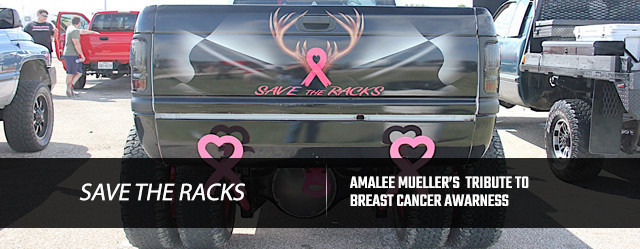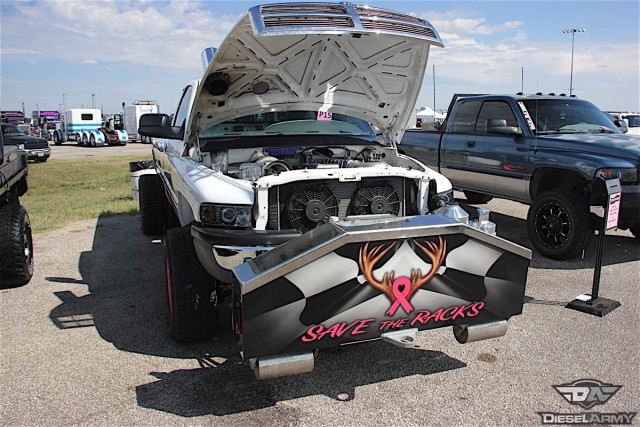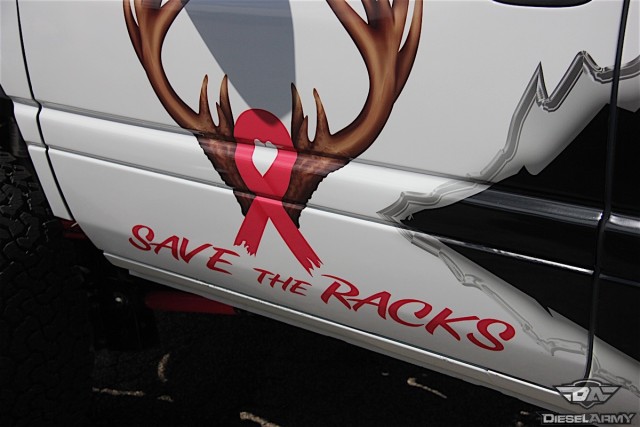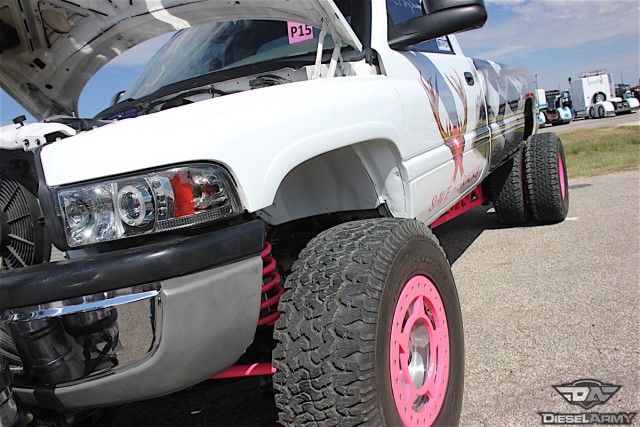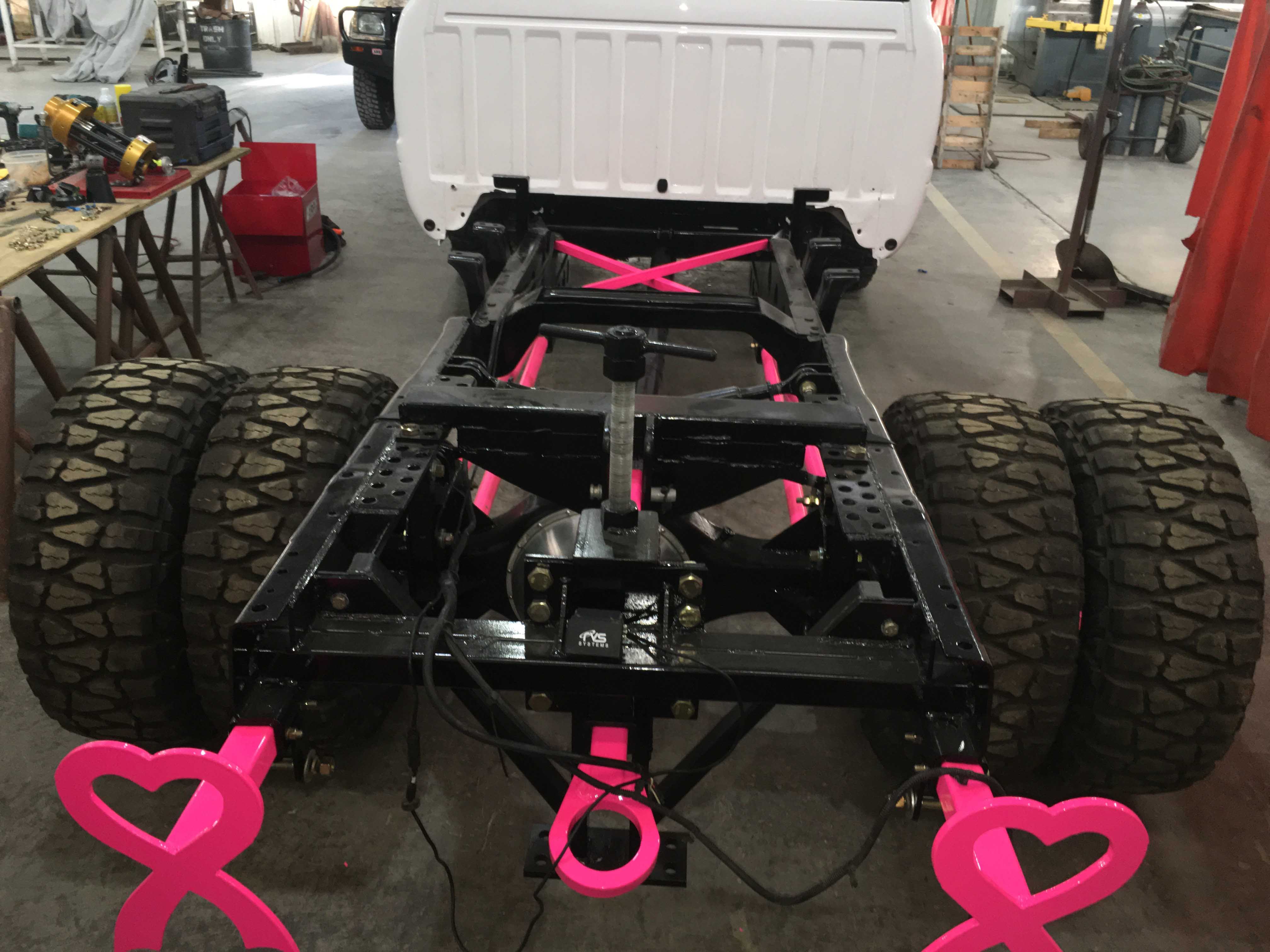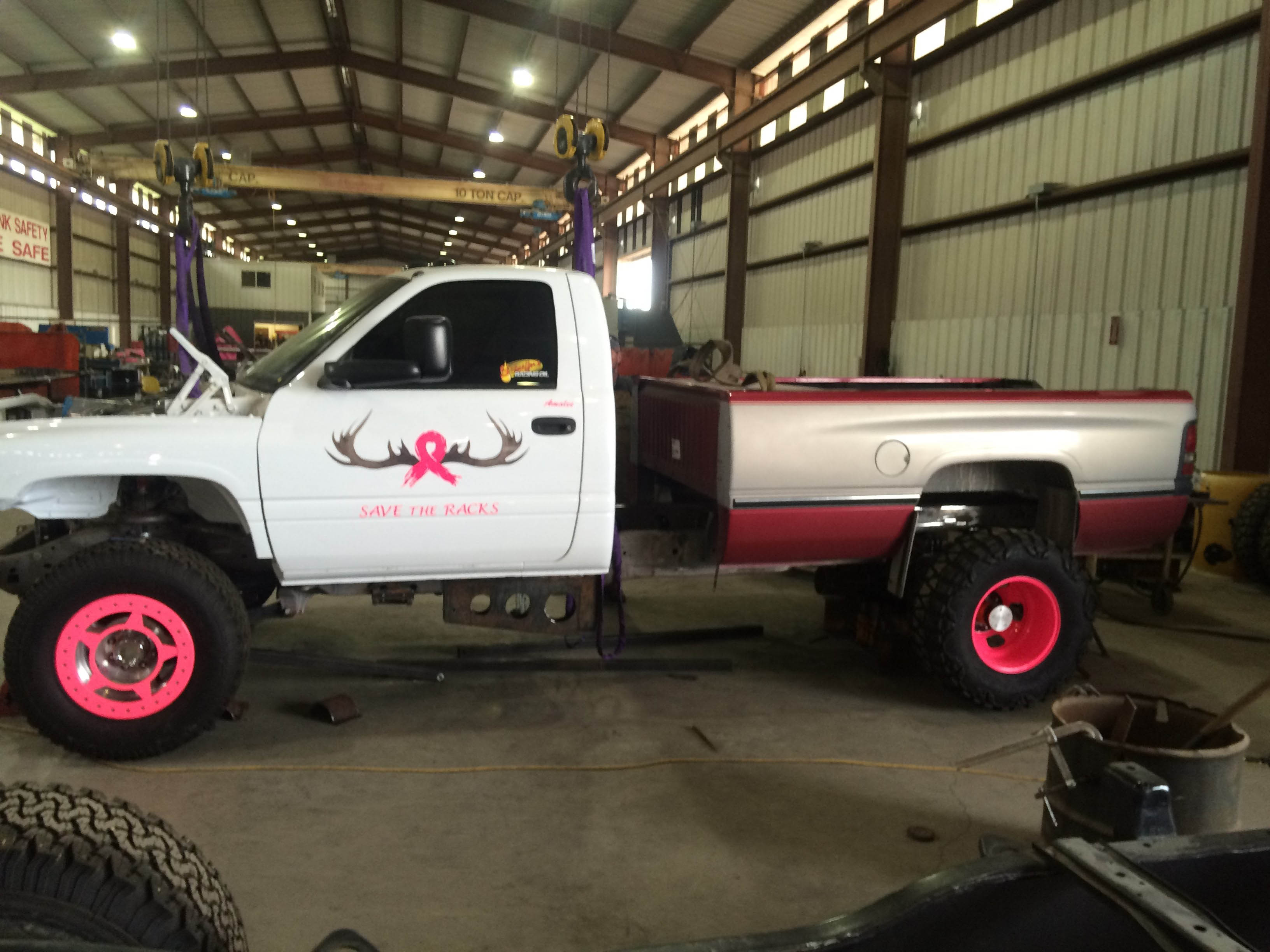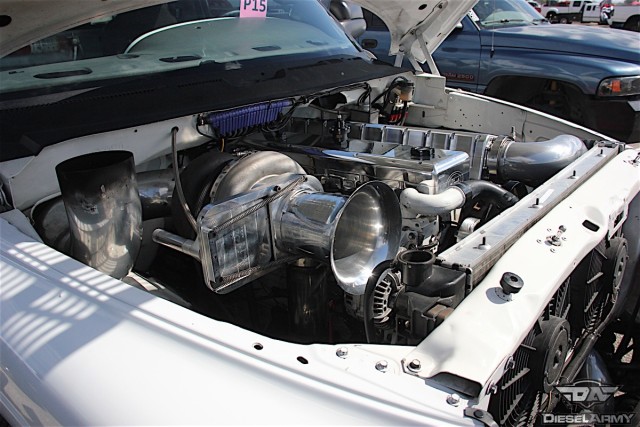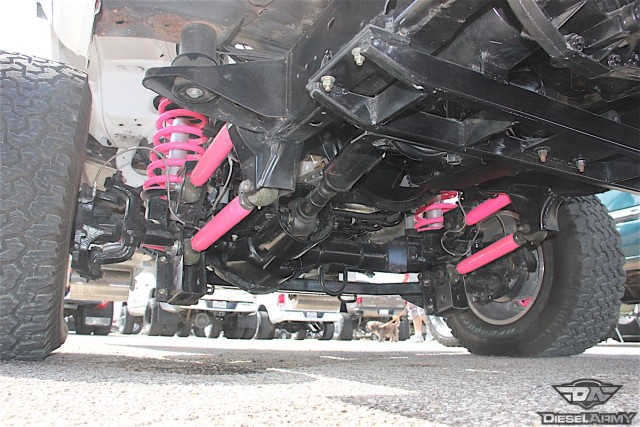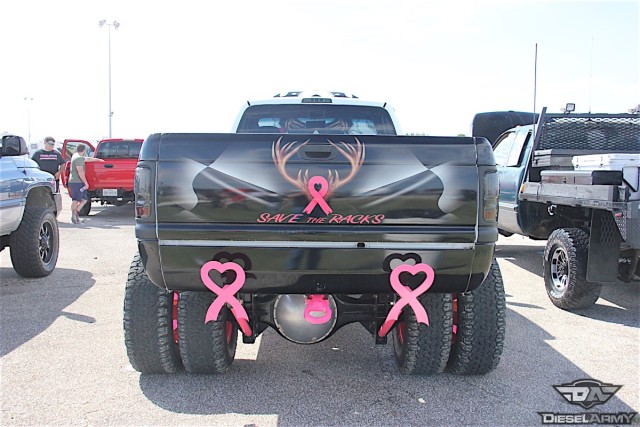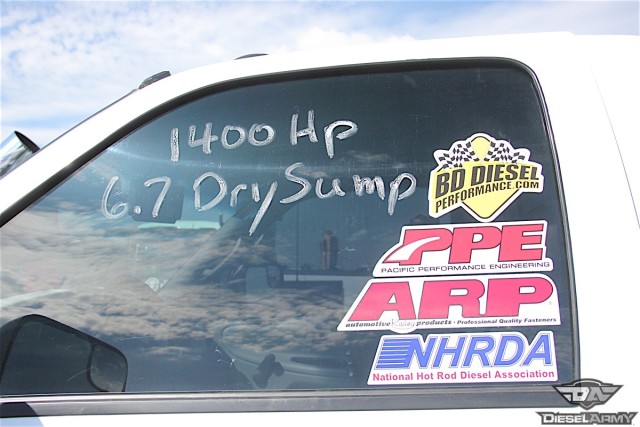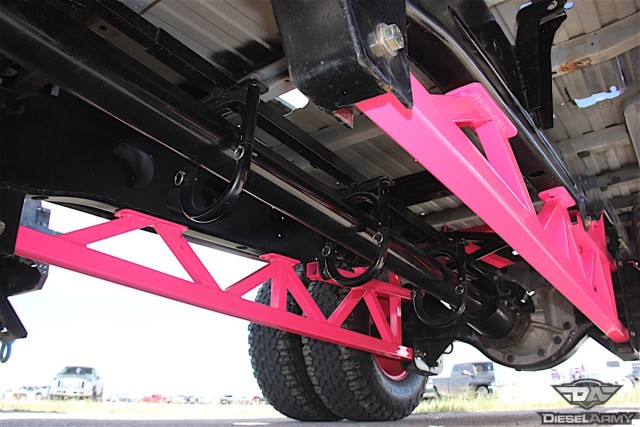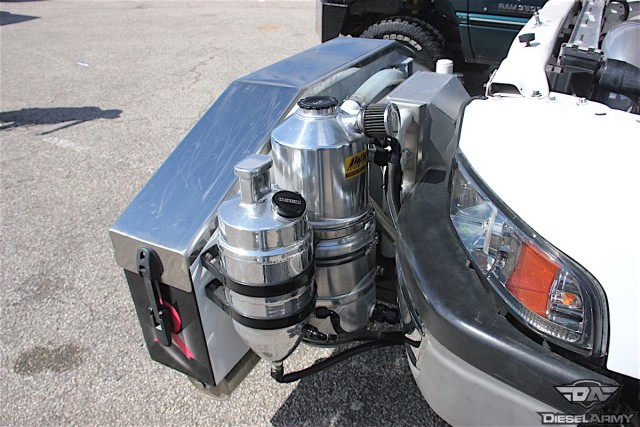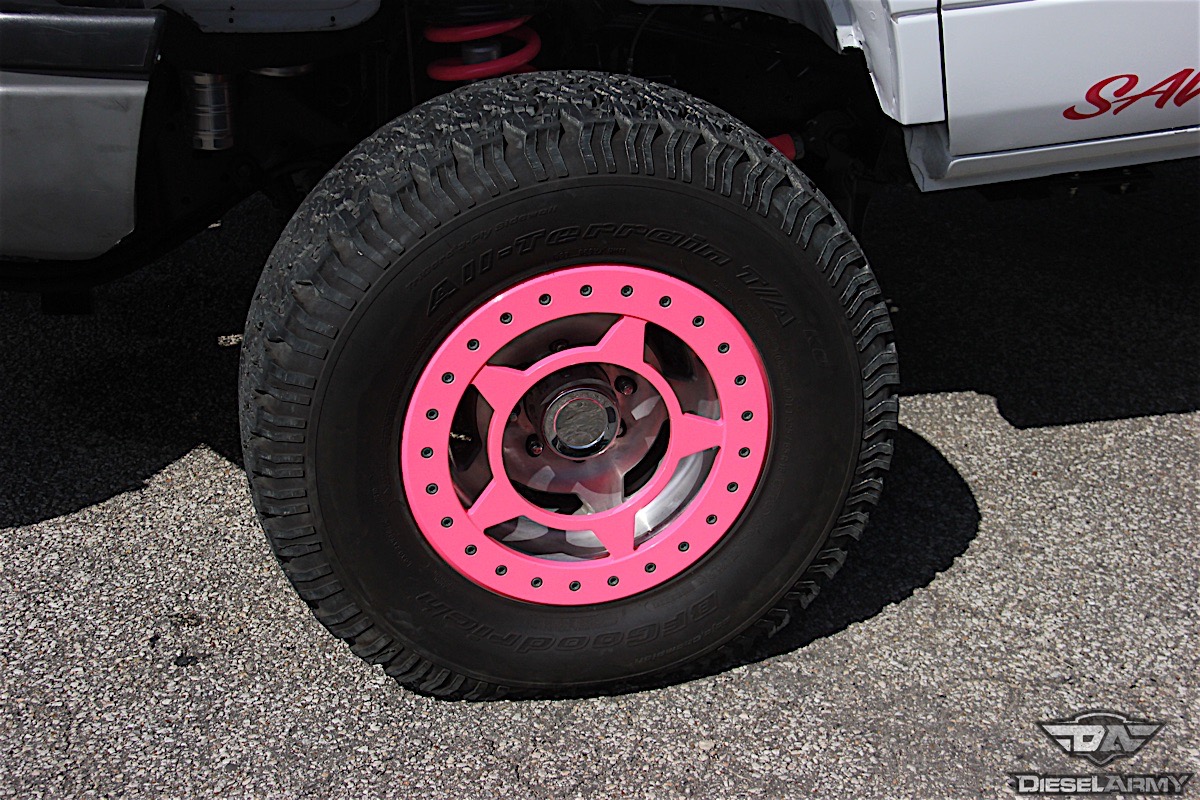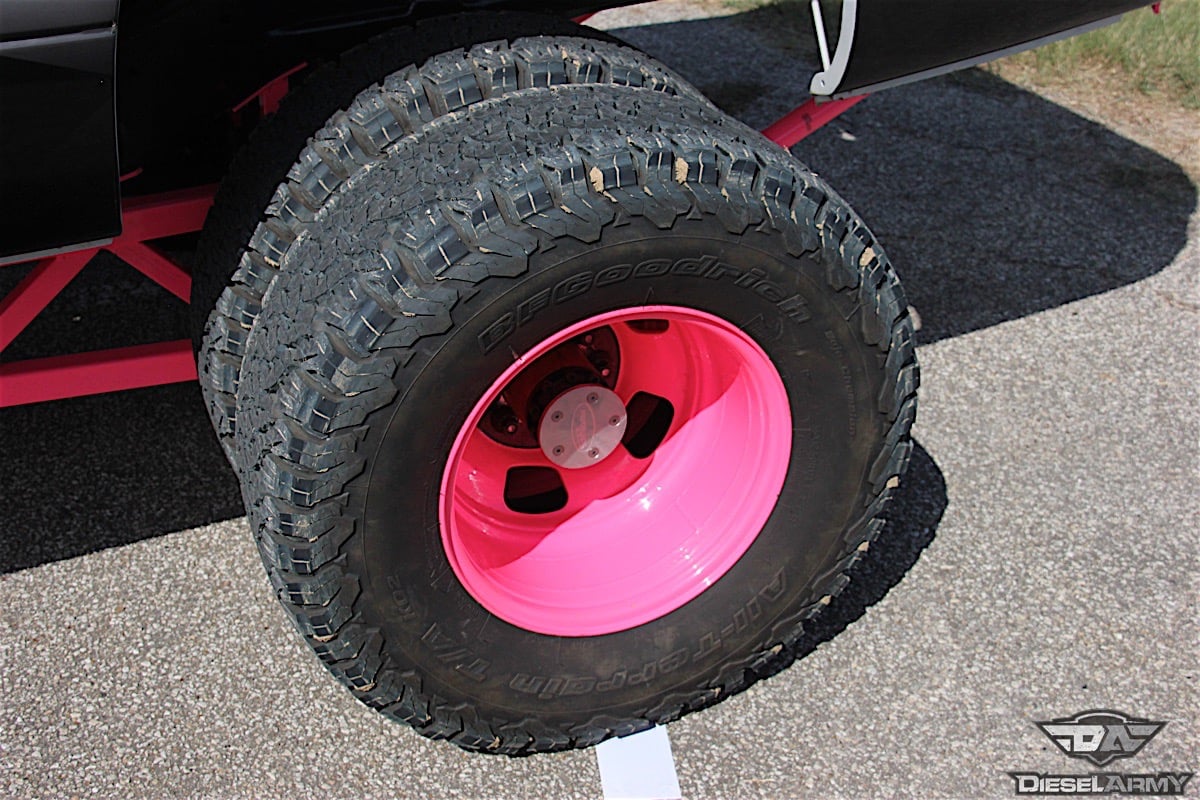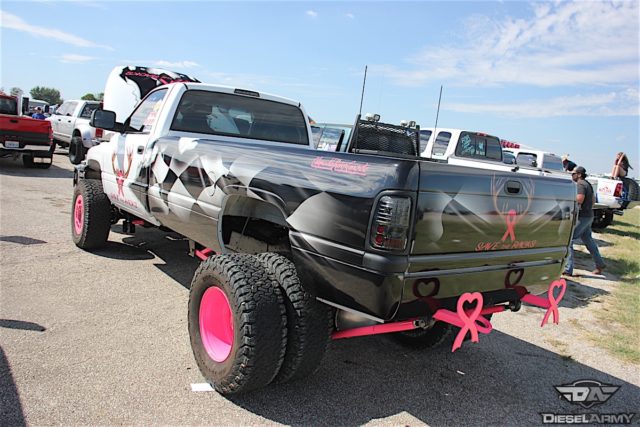Vehicle build inspiration can come from just about anywhere, but family has to top it all. In 2008, Amalee Mueller’s mother was diagnosed with breast cancer. Near the beginning of the long treatment journey, Mueller and her father attended her first truck pull competition. She had just started driving and her daily driver was a three-quarter-ton Dodge Ram with a twin-turbo setup on a 5.9-liter. The pair entered her truck into the Open class, and she has been hooked ever since.
The story of the truck you see here begins with the story of another truck. To keep from tearing about Amalee’s daily driver, the Texas family purchased an old 5.9-liter Cummin snow plow truck from Ohio that had over 300,000 miles on the odometer. Everything was disassembled and was a huge learning curve for everyone.
Amalee went to work sandblasting everything. Later, she would paint-match all the parts herself. In the process, Christmas 2009 popped up. “I opened a big box,” Amalee explains, “consisting of a welding helmet and gloves. Confused, I looked to my mom to see if she mistakenly labeled this for me instead of my dad, and Dad said ‘Surprise! you’re gonna be welding on your own truck.’ Nearly all the brackets and add-ons were welded by Amalee.
Over the course of two and a half years, Amalee, Edgar and family friend Kevin Morrisey completed the truck. Amalee thinks back that “it was a blessing to have a release from the world of chemotherapy and life-changing decisions with mom being sick, and just work in the shop for a couple hours every night, but after she went into remission, it became a family affair.” The black truck was accented in pink to bring awareness and add a pop of color.
About halfway through the build process, the team realized they were not going to be able to build a vehicle that could race and pull at a 100-percent capacity. The team decided to lean into the drag racing instead. Amalee commented that she is proud to have built the truck and learned many lessons from her Dad and Kevin. “We have so much fun continuing the progress!” she says.
When the race truck was about as done as any race vehicle really ever gets, Amalee headed off to nursing school. Edgar and Kevin continued on and located a 2001 Ram as a donor truck to build into a puller. Being a family inspired by the hardships of breast cancer as well as avid hunters, the truck was aptly named “Save The Racks.”
Due to not being within close proximity, Amalee had to step back partially from the build of the new truck. Edgar and Kevin took up the balance and went full force into building a solid truck. Amalee designed the wrap and helped with the accents.
“Save The Racks” is a 1998 Dodge Ram 2500 4×4. The truck started off as a single cab long bed. Early on, the team realized the wheelbase was not of sufficient length to effectively compete, so an extended cab long bed frame was sourced. To save weight, they used their original standard cab, then lengthened the bed to make up the space. With the help of Darvin Bradley at Mineral Wells Collision Center, the bed was stretched to 11 feet eight inches using a donor bed.
The standard cab long bed wasn't long enough. The team swapped the cab to an extended cab long bed frame and stretched the bed to 11 feet 8 inches.
“The most interesting thing for me was the learning curve and the rate at which the truck evolved,” explains Morrisey. “Things you try that you think might work well and turn out to be crap, such as our hitch designs. We thought that making an adjustable hitch would be beneficial, but it turned out to be heavy and caused more questions than answers, so we resorted to the KISS principle and also focused on cutting weight.”
“We have actually built this truck three times now,” continued Morrisey. “The first time was a single-wheel single cab with a 12-valve Cummins and we learned very quickly that the truck was too short, did not have enough traction, and not enough power to compete. We started over with a better 12-valve engine and a dually rearend. We did better but we were shelling rearends every weekend and were still missing the leverage we needed, so we started again with an extended cab frame, a D&J Precision Machine [7] deck plated Enforcer 6.7-liter Common Rail, and a Rockwell 20-145 rearend from Proformance Pro’s [8]. Since then, that has been what we are running and have been doing very well with. We have changed out a few designs here and there, like our ladder bar setup and hitch designs, but we have been lucky this last season and the truck has performed perfectly.”
The Power
Under the hood, Save the Racks is sporting a built 6.7-liter Cummins Common Rail Enforcer engine. The inline six has a displacement of 408 cubic inches and is estimated at 1400 horsepower. The Cummins was built by D and J Precision Machine in Cambridge, Ohio. The motor is fully balanced and blueprinted with D and J connecting rods and a full girdle to support the bottom end.
The camshaft moves smoothly using full roller lifters and rockers. The truck runs a full dry-sump system. Engine oil is segregated from the turbo using a pair of individual tanks. Exhaust flows out through a Steed Speed [10] T6 manifold. The fumes power up a Hart’s Diesel [11] HX60 turbocharger. The whole system is kept running by a factory 2006 Ram ECM and a custom wiring harness.
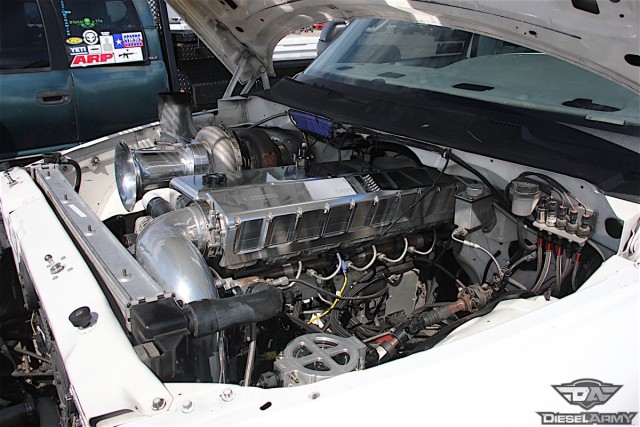 [12]
[12]The 6.7-liter common rail motor is fully balanced, blueprinted, and has approximately 1,400 horsepower.
Behind the powerplant resides an NV4500 three-speed manual transmission that was built by ProFab [13]. The unit was built with custom ratios – 5.13:1, 4.88:1, and 4.70:1 from first to third, respectively. To effectively transfer the power to the transmission, Valair [14] Triple Competition Pulling Clutch is bolted to the flywheel. Behind the trans is the stock transfer case.
To keep the driveshafts from exploding, new units were built using 1410 U-joints up front and 1480 in the rear. Cages were built to surround the U-joints at the differentials, as nobody wants a U-joint slicing through the cab after being split apart by 1,400 horsepower. The entire rear driveshaft is caged to keep it from turning into a pogo stick, should it let go near the transfer case.
Under the front end resides the original factory Dana 60 differential. Loaded with an Eaton [16] E-locker and 4.88:1 ratio ring and pinion, the stock unit is strong enough to continue the good fight. Out back, however, there is nothing stock. A Rockwell 20-145 was bolted instead. Built by Proformance Pros in Carney, Michigan, the diff is loaded with a spool and matching 4.88:1 ratio gear set.
“In 2015, our association, Texas Truck and Tractor Pulling Association [18] (TTTPA), required us to run a one-ton or smaller factory rearend,” Morrisey explained. “Our rules are locked in for three years and not up for discussion until 2018. Previously, we were running a Dana 80, and a few others were running AAM 11.50’s. Rearend failures were becoming a national problem since horsepower was increasing in the trucks.”
“We were breaking ring and pinion gears every two to four hooks,” Morrisey continued. “Sometimes, when they would let go, they would shock the rest of the driveline and destroy the front differential or other things. After a few trucks had broken so bad that the front knuckles actually broke off, our association decided it was a safety concern and let us go to open rearend. This meant we were now able to run whatever we wanted. The prominent choice has been a sheet metal version of the Rockwell, but we opted for the extra strength of the factory design. It has aluminum hubs to convert it back to a factory eight-lug spec.”
Being a purpose-built rig that doesn’t see normal street driving, the team opted to not have any brakes out back. Up front, a set of single piston Wilwood [20] brakes, those combined with ultra-low gearing, allows the vehicle to be safe during competitions.
The front suspension on Save the Racks is stock height. To get the extra clearance needed for the slightly larger tires, a body lift was installed. This helps to keep the center of gravity low. The stock coils were painted pink to go along with the theme, and custom control arms were built with flex joints to handle the extra stress the truck sees. Of course, they were also painted pink.
The rear suspension is an entirely different matter. The stock leaf springs were ditched and a solid ladder bar system was designed. The serious beef means there is no power lost to spring wrap or squatting. Just pull and go power.
The Body
The body was wrapped by 360 Wraps [22] in Fort Worth, Texas with a custom black and white checkered flag design that prominently displays the breast cancer ribbon. A roll pan smooths out the back end and makes ample clearance for hooking to the sleds. Up front, an oil tank and two-gallon fuel tank sit on a weight box just in front of the stock bumper and grille.
To put the power to the ground, the team chooses between two sets of tires: 35-inch BF Goodrich [24] All-Terrains and 35-inch Nitto [25] Mud Grapplers. The front uses Spyderlock [26] beadlock wheels and the dually rears use widened factory units.
The interior was stripped to save weight. A full Racepak [27] dash and system are used to keep the driver in the know of what is going on with the truck.
The team uses both BF Goodrich All-Terrains and Nitto Mud Grapplers to get the job done.
What’s Next
When asked what is next for their team, Morrisey said, “We have already planned our next set of changes for our next rebuild. First will be a Bosch [30] standalone ECM to control the injectors a little better, along with some faster injectors. We also want to work on our turbo in transition into the 3.0 smoothbore class and we will be changing up wheels to save some more weight. The most important thing we have learned is to be weight-conscious and to build light, which is a hard concept the wrap your mind around when you are also trying to build it not to break. We also plan on doing some re-gearing of the rearends to get a little more wheel speed.”
From an escape from a daily reality, a new way of life was born. Amalee and her family, including Morrisey, are now a solid part of the diesel truck competition culture. The team would like to send out special thanks to Drew Pumphrey and his crew at D&J Precision Machine, Zack Hamilton at Hamilton Cams [31], Tom Mcnair for all the help fabricating, Buck Hyndman for all his knowledge, and Kevin Sorrenson.
Keep your eyes out for Save the Racks and Amalee’s family. They’ll likely be dominating a competition near you soon!
